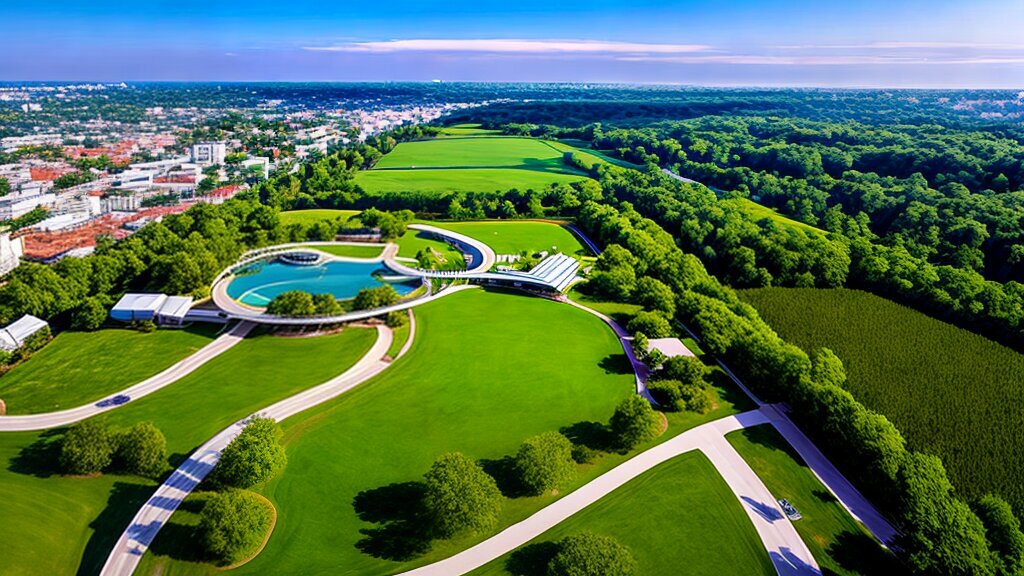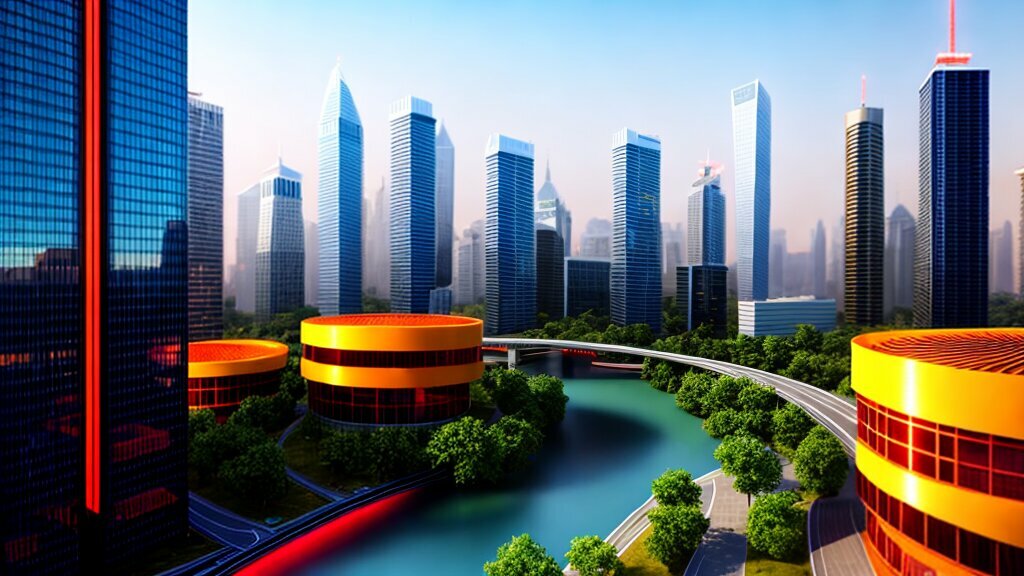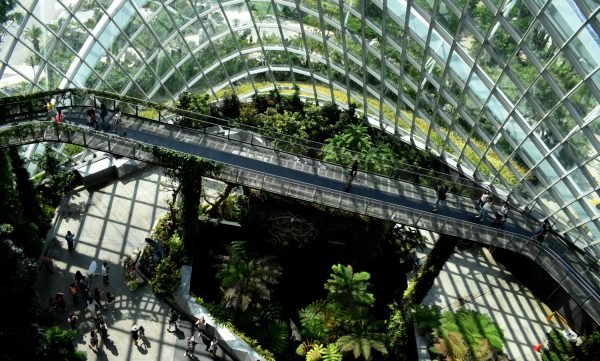From Concrete to Conservation: The Evolution of Sustainable Building Practices
Welcome to our article exploring the evolution of sustainable building practices. Over the years, there has been a significant shift from traditional concrete constructs towards more environmentally conscious designs. Sustainable construction methods, green building technologies, and eco-friendly construction practices are becoming increasingly important in the construction industry.
Architects and builders now prioritize sustainable architecture trends, the use of sustainable materials for construction, energy-efficient building design, green construction techniques, and the emergence of innovative environmentally friendly building practices. In this article, we will explore the early days of sustainable building practices, the rise of green building technologies, sustainable architecture trends, sustainable materials, energy efficiency, and green construction techniques that are shaping the future of the construction industry.
Key Takeaways
- The shift towards sustainable building practices is becoming increasingly important in the construction industry.
- Sustainable architecture trends, the use of sustainable materials for construction, energy-efficient building design, green construction techniques, and innovative environmentally friendly building practices are all shaping the future of the construction industry.
The Early Days: Challenges and Awareness
The evolution of sustainable building practices has not been a smooth one. In the early days, architects and builders alike faced numerous challenges as they began to explore more environmentally conscious construction methods. One of the biggest obstacles they encountered was a lack of awareness about environmental issues, and the impact that construction practices were having on the planet.
As a result, early sustainable building practices were often limited by a lack of knowledge, resources and technology. In many cases, builders had to rely on trial and error to determine what worked and what didn’t, which led to a lot of experimentation with different methods and materials.
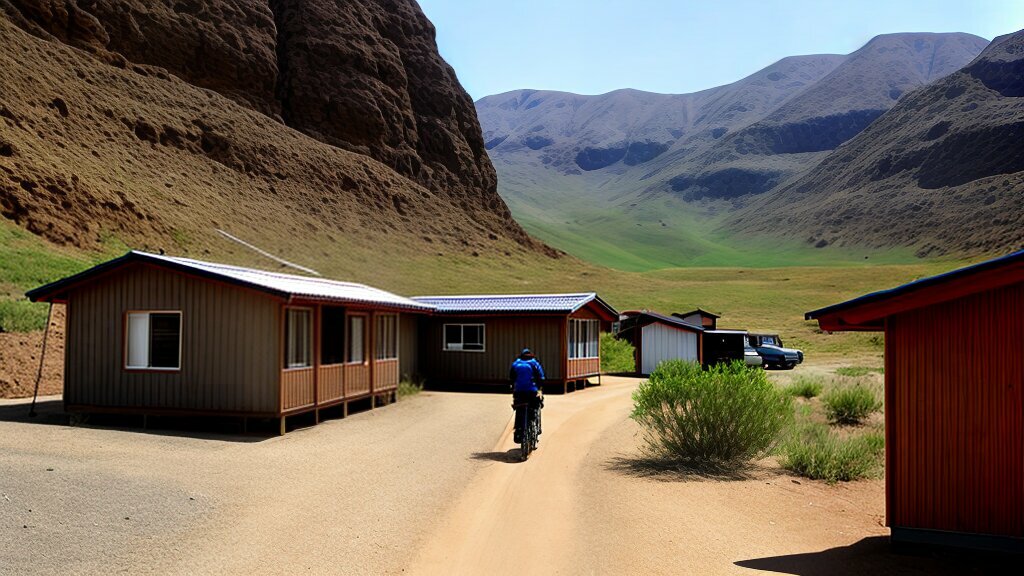
Despite the challenges, the early pioneers of sustainable building practices remained committed to finding ways to reduce the impact of construction on the environment. They recognised that energy efficiency was a key component of sustainability, and they worked tirelessly to develop new methods for achieving this.
“We have a responsibility to future generations to use our resources wisely and to leave the world a better place than we found it.”
As environmental awareness grew over time, so too did the development of sustainable construction methods. Architects and builders began to explore new innovations, from energy-efficient building materials to eco-friendly construction methods, that helped to reduce the environmental footprint of construction.
Despite the progress that has been made, there is still much work to be done in the realm of sustainable building practices. It is our responsibility to continue pushing for change and innovation in the construction industry, so that we can create a better, more sustainable future for ourselves and for generations to come.
The Rise of Green Building Technologies.
The construction industry has come a long way in terms of sustainable building practices, with the rise of green building technologies paving the way for a more eco-friendly approach to construction. These sustainable construction innovations include energy-efficient building materials and eco-friendly construction methods that help reduce the environmental footprint of buildings.
| Green Building Technologies | Description |
|---|---|
| Green Insulation Materials | These materials are made from recycled materials, such as denim and cotton, providing a sustainable alternative to traditional insulation materials. |
| Renewable Energy Systems | These systems utilize solar panels, wind turbines, and other renewable energy sources to power buildings, reducing dependence on non-renewable energy sources. |
| Passive Design Strategies | These strategies include designing buildings to maximize natural light and ventilation, reducing the need for energy-intensive heating and cooling systems. |
As green building technologies continue to evolve, more sustainable building practices are emerging. Smart buildings, for example, use advanced technologies such as sensors and automation to optimize energy use and reduce waste. Green roofs and rainwater harvesting systems are also becoming popular, providing a way to reduce runoff and promote sustainable resource use.
With the ongoing efforts to promote sustainable building practices, the construction industry is moving towards a greener future. The use of these technologies and strategies not only benefits the environment, but it also helps reduce costs associated with energy use, making sustainable buildings a more viable option for developers and consumers alike.
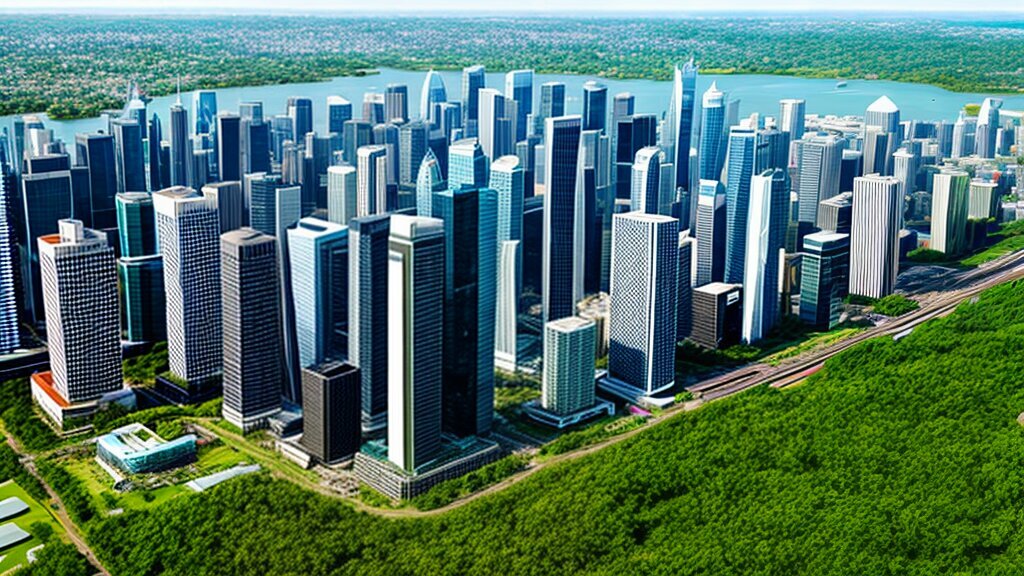
Sustainable Architecture Trends: Designing for the Future.
Sustainable architecture trends have increasingly shifted towards designing buildings that are not only environmentally conscious but also functional, aesthetically appealing, and comfortable for occupants. Architects and builders are integrating green building design principles to create structures that are sustainable and energy efficient. Biophilic design and passive solar design are two examples of sustainable architecture trends that have gained popularity in recent years.
Biophilic design focuses on integrating natural elements such as greenery, sunlight, and water into the building’s design to create a connection between nature and the occupants. This not only promotes a healthy living environment but also has a positive impact on mental health and productivity.
Passive solar design utilizes the building’s orientation, materials, and aperture to effectively manage solar radiation and reduce energy consumption. By maximizing natural resources, passive solar design reduces dependency on artificial energy sources and reduces carbon footprint.
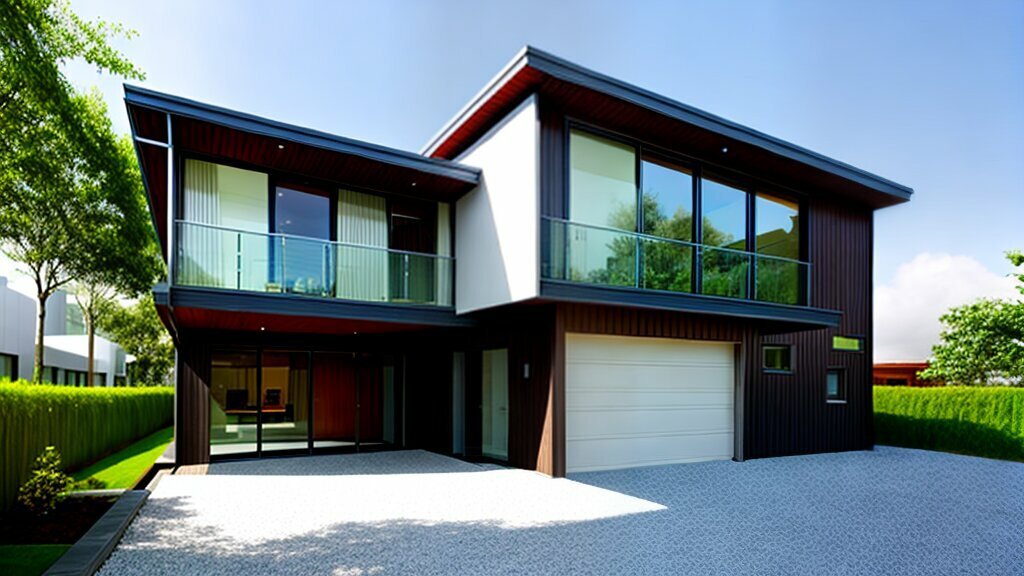
Net-zero energy buildings are also a trend gaining momentum in sustainable architecture. These buildings generate as much renewable energy as they consume, making them self-sufficient and environmentally friendly. They achieve this through various strategies, such as optimizing energy efficiency, integrating renewable energy systems, and using sustainable materials for construction.
Sustainable architecture trends are continuously evolving, and new innovations are emerging to create even more sustainable and environmentally friendly buildings. It is evident that architects, builders, and designers are committed to building a sustainable future for generations to come.
Sustainable Materials: Building with the Environment in Mind
Building with sustainable materials is one of the key principles of sustainable building practices. By using eco-friendly materials, we not only reduce the environmental impact of construction but also promote responsible resource consumption.
One of the most popular materials used in sustainable construction is recycled materials. These materials, such as recycled steel and concrete, can reduce the carbon footprint of construction by up to 90%. By incorporating these materials in the building process, less energy is consumed, and fewer resources are wasted.
Another sustainable material for construction is sustainable wood products. Wood is a renewable resource when harvested responsibly, and by using certified sustainable wood products, we can reduce deforestation and promote responsible forest management.
The use of eco-friendly building materials is becoming increasingly prevalent in sustainable building practices. These materials, such as bamboo and cork, are renewable, biodegradable, and have low environmental impact production processes.
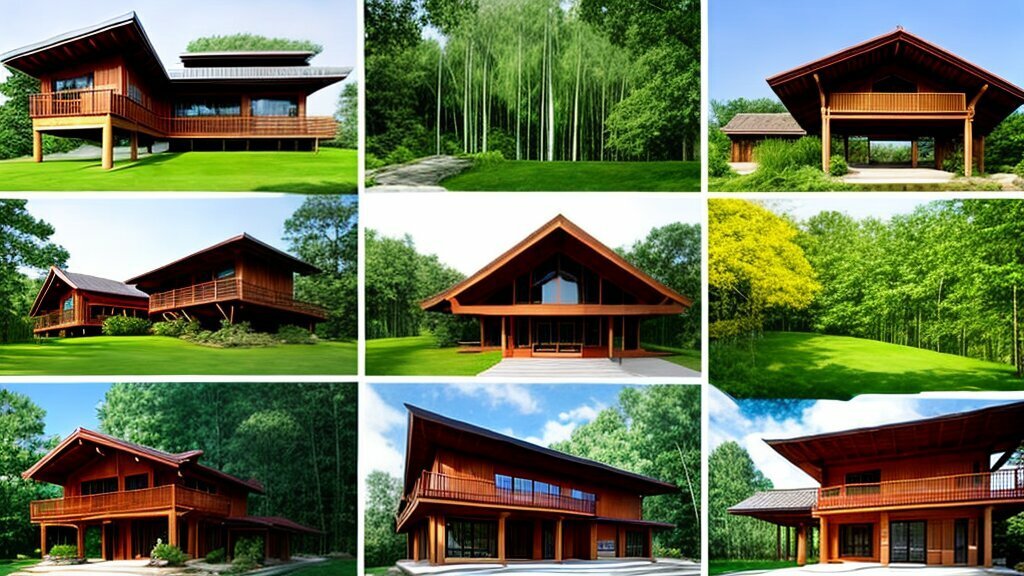
Recycled materials and eco-friendly materials aren’t the only options for sustainable building. Innovative sustainable materials such as hempcrete, mycelium composites, and rammed earth are increasingly being used in construction. By using these materials, we can reduce the carbon footprint of construction and promote sustainable construction practices.
Overall, the use of sustainable materials in construction is essential for promoting environmentally friendly building practices. Through the use of recycled materials, sustainable wood products, and eco-friendly materials, we can promote responsible resource consumption and reduce the carbon footprint of construction.
Energy Efficiency: A Key Component of Sustainable Building Practices.
Energy efficiency is a crucial aspect of sustainable building practices, as it plays a significant role in reducing the environmental impact of buildings. The incorporation of energy-efficient building design and passive design strategies can significantly decrease energy consumption and greenhouse gas emissions.
One of the key ways to achieve energy efficiency in building construction is through the use of smart insulation materials. These materials can provide superior thermal insulation while reducing energy usage and greenhouse gas emissions. Additionally, the integration of renewable energy systems such as solar panels and wind turbines can supplement traditional energy sources and further enhance energy efficiency.
Passive design strategies, such as the use of natural ventilation and daylighting techniques, can also contribute to energy efficiency in building construction. These strategies reduce the need for artificial lighting and mechanical ventilation systems, resulting in significant energy savings.
| Green Insulation Materials | Renewable Energy Systems | Passive Design Strategies |
|---|---|---|
 |
 |
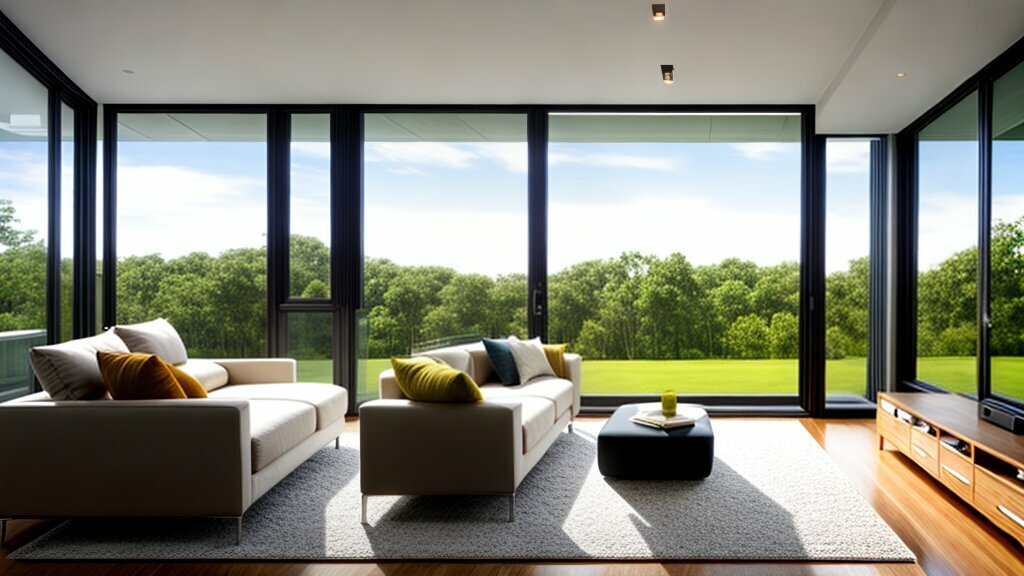 |
The use of green insulation materials, renewable energy systems, and passive design strategies not only reduces the environmental impact of buildings but also leads to cost savings for building owners and occupants. Energy-efficient buildings consume less energy, resulting in lower utility bills and reducing maintenance costs.
As we continue to prioritize sustainability in building construction, the adoption of energy-efficient building practices will become increasingly essential. Architects and builders must consider the long-term environmental impact of their designs and strive to create buildings that are not only aesthetically pleasing but also environmentally responsible.
Green Construction Techniques: Innovations for a Sustainable Future
Innovative green construction techniques are playing an increasingly significant role in the development of sustainable building practices. At the forefront of this trend are smart buildings, which utilize cutting-edge technology to enhance energy efficiency and reduce waste. These buildings are equipped with automated systems that allow for real-time monitoring of energy usage, enabling adjustments to be made in response to changing conditions.
| Building Type | Green Roof | Rainwater Harvesting System |
|---|---|---|
| Commercial | ✓ | ✓ |
| Residential | ✓ | ✓ |
| Institutional | ✓ | ✓ |
Green roofs are another innovative technique that have been gaining popularity in recent years. These roofs are covered in vegetation and provide a number of benefits, including insulation, noise reduction, and improved air quality. They also help to reduce the “heat island” effect in urban areas, where temperatures can be several degrees higher than in surrounding rural areas.
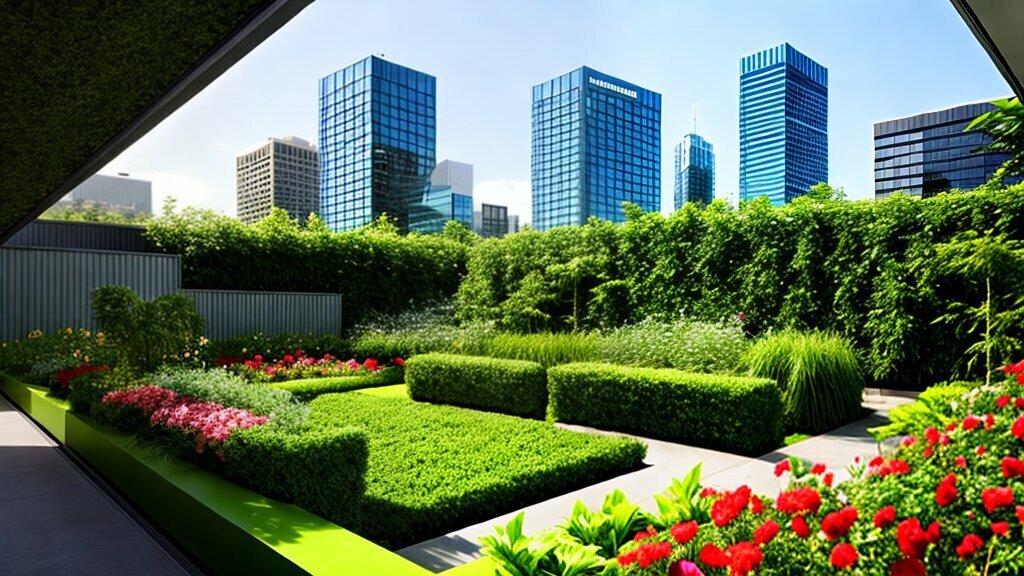
Rainwater harvesting systems are yet another example of sustainable building practices. These systems collect and store rainwater for use in irrigation, flushing toilets, and other non-potable uses. By reducing the demand for potable water, these systems help to conserve this valuable resource and reduce strain on municipal water supplies.
As the adoption of green construction techniques continues to grow, we can expect to see even more innovations in the field of sustainable building practices. By prioritizing environmental stewardship and adopting eco-friendly construction methods, we can work towards creating a more sustainable future for generations to come.
Sustainable Building Practices: A Bright Future Ahead
Throughout this article, we have traced the evolution of sustainable building practices and explored the various innovations and techniques that have emerged over the years. From the early challenges and limitations to the rise of green building technologies, sustainable architecture trends, energy-efficient building design, and the use of sustainable materials, it is clear that sustainable construction has come a long way.
As we move toward the future, the importance of sustainable building practices will only grow. From smart buildings to green roofs and rainwater harvesting systems, there are more innovations and techniques emerging every day that will help us build in a more environmentally friendly and sustainable way.
The Importance of Ongoing Sustainability Efforts
It is important to remember that sustainable building practices are an ongoing effort. We must continue to innovate and improve our techniques to ensure that we are building in a way that is not only environmentally conscious but also economically viable and socially responsible.
As we continue to face climate change and other global environmental challenges, sustainable construction will play an increasingly crucial role in mitigating the impacts of these issues and helping us build a better future for ourselves and our planet.
The Future of Sustainable Construction
The future of sustainable construction is bright. As technology advances and we gain a better understanding of sustainable materials and designs, we will continue to see more eco-friendly and sustainable buildings emerging across the world.
While there are still challenges to overcome and progress to be made, the future of sustainable construction is filled with possibility and potential. As architects, builders, and individuals alike, we have a responsibility to contribute to this ongoing effort and make sustainable building practices a central part of our lives and businesses.
Together, we can create a more sustainable and environmentally friendly world, one building at a time.
FAQ
Q: What are sustainable building practices?
A: Sustainable building practices refer to construction methods and design principles that prioritize environmental conservation, energy efficiency, and the use of eco-friendly materials.
Q: How have sustainable building practices evolved over time?
A: Sustainable building practices have evolved from traditional concrete constructs to more environmentally conscious designs. This evolution includes advancements in green building technologies, the use of sustainable materials, energy-efficient building design, and the emergence of innovative environmentally friendly practices.
Q: What were the challenges faced during the early days of sustainable building practices?
A: During the early days, there were limited awareness and understanding of environmental issues. Architects and builders faced challenges in implementing sustainable construction methods and ensuring energy efficiency in buildings.
Q: What are some examples of green building technologies and innovations?
A: Green building technologies include energy-efficient building materials, eco-friendly construction methods, and the integration of renewable energy systems. Innovations such as smart buildings, green roofs, and rainwater harvesting systems also contribute to sustainable construction practices.
Q: How does sustainable architecture influence building design?
A: Sustainable architecture trends focus on designing for the future by integrating green building principles, such as biophilic design and passive solar design. This approach aims to minimize environmental impact and promote sustainable living.
Q: What are some examples of sustainable materials used in construction?
A: Sustainable materials for construction include eco-friendly building materials, such as recycled materials and sustainable wood products. These materials help reduce resource consumption and promote sustainable building practices.
Q: Why is energy efficiency important in sustainable building practices?
A: Energy efficiency is a key component of sustainable building practices as it helps reduce energy consumption and minimize environmental impact. It involves designing buildings to be energy-efficient, incorporating passive design strategies, and using green insulation materials.
Q: What are some green construction techniques used in sustainable building?
A: Green construction techniques include smart buildings, green roofs, and rainwater harvesting systems. These techniques contribute to reducing environmental impact, conserving resources, and promoting sustainable living.
Q: What is the future of sustainable building practices?
A: The future of sustainable building practices involves ongoing sustainability efforts and continued innovation in the construction industry. There is a potential for even more environmentally friendly building practices to emerge and contribute to a sustainable future.
Episode 13: How Women Can Create Sustainable Change, Especially in Light of the IPCC Report



